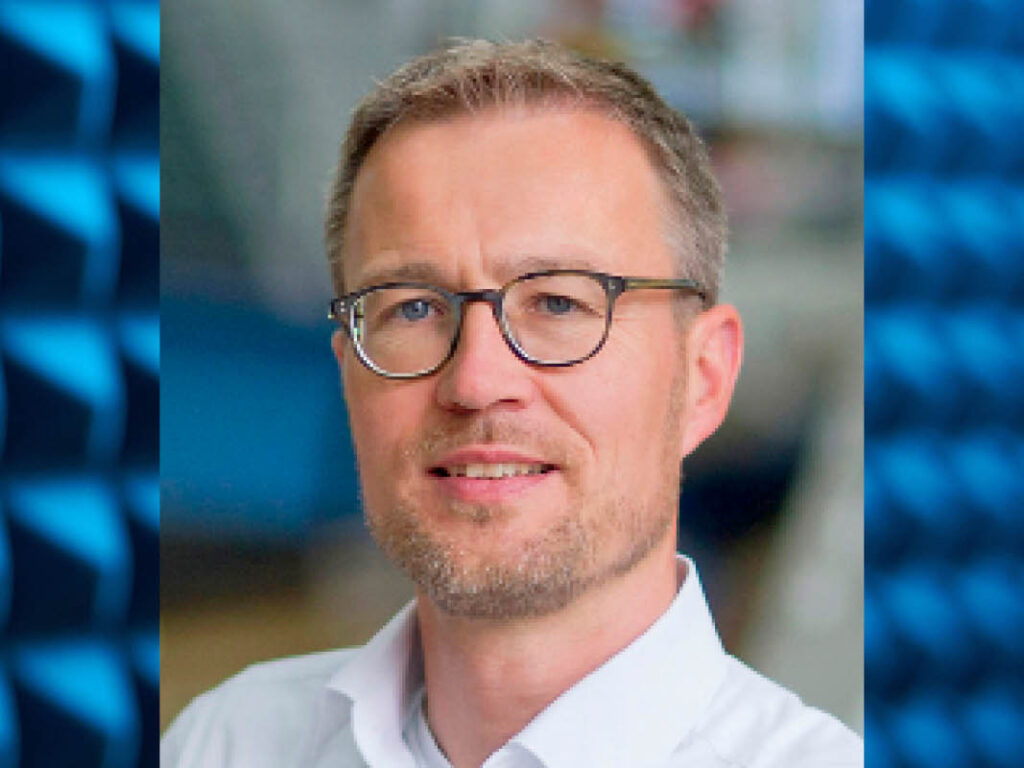Bosch engineers rubbing shoulders with university researchers at coffee machines in ARENA2036 are brewing more than coffee; they’re fusing public and private innovation.
“It’s really an industry on a campus,” explains Peter Middendorf, professor and vice-rector transfer at the University of Stuttgart, in the latest Commercial Disco(very) podcast with James Riley.
Active Research Environment for the Next Generation of Automobiles (ARENA2036) is a futuristic research campus in Stuttgart that fosters industry-academia collaboration.
“We started 10 years ago with a focus on Industry 4.0, evolving into a much broader scope,” says Professor Middendorf.
“Now, we’re delving into software-defined mobility, quantum technology, and artificial intelligence.”
ARENA2036 is funded through federal programs, university contributions, and public-private partnerships. By 2036, the facility aims to lead global automotive technologies and mobility solutions.
The co-design space draws titanic partners like Mercedes and Siemens to share IP and ideas on intelligent factory floors, which is very different from Australia’s more dispersed, startup-centric approach.
With his long-running connections to CSIRO, Peter Middendorf has cultivated partnerships across the Australian innovation landscape.
These include collaborations with Quickstep Technologies and the CRC for Advanced Air Mobility, which showcase a commitment to fostering ties between German and Australian research and industry sectors.
“I’m looking for new opportunities, new ideas that I can take back to Stuttgart,” he says. Two of his PhD students work at the Tesla Lab 4.0 in Australia, highlighting cross-border collaboration.
While he looks to Australia for inspiration from middle-layer companies and startups, many trailblazers here may marvel at the corporate might ARENA2036 draws in to turn research into commercial products.
He highlights one standout project: the Bosch Interactive Floor, where teams interactively build and change the design of a factory floor based on what you need in a Lego-type approach to bridging logistics and production.
“Production is simpler if more of the intelligence is built into the floor rather than into the devices and machines,” Professor Middendorf explains.
Each panel autonomously manages devices and machines with its advanced control system, facilitating real-time analysis and optimisation. Features like wireless energy transmission and 5G connectivity ensure seamless operation, while dynamic and LED guidance enables precise navigation.
“This co-design, co-development, and co-research with companies like Bosch allow us to expedite innovation.”
Professor Middendorf believes proximity is the key differentiator at the factory, which features three areas: a strong concrete head-end, a lobby and a seminar room. Offices are above with big windows to see everything, and the basement stores tech. The big shop floor allows lots of different setups.

“Our partner can travel to their company side every morning or to the arena.”
The facility is also heavily involved in the virtual data space or ARENA-X, a platform for managing digital information: “Our operations aren’t confined to the shop floor; we leverage data for enhanced efficiency and innovation.”
He mentions additional hydrogen storage and energy projects for industrial manufacturing and new ventures around IIoT.
“We do workshops with industry, especially on our quantum sensors. We already have the first projects in our ecosystem” he said.
The federal funding for ARENA2036 only constitutes about 5 per cent of the overall project budget, with the rest coming from industry partners, research institutions, and other private investment sources.
He told us ARENA2036 represents a significant return on investment, but mainly in the form of new investment in partnerships, projects, and new ideas for driving the ecosystem.
The scale and funding model of initiatives like ARENA2036 has arguably no direct counterpart in Australia, indicating a difference in the scale and infrastructure of innovation platforms.
“I’ve noticed significant changes in Australia over the past decade, with a shift towards more applied research compared to the emphasis on fundamental research in the past 10 or 20 years,” Professor Middendorf said.
With his latest visit to Australia, he hopes to interact with a “lot of exciting small and medium startups with cool and interesting ideas, projects, and technologies.”
Do you know more? Contact James Riley via Email.
